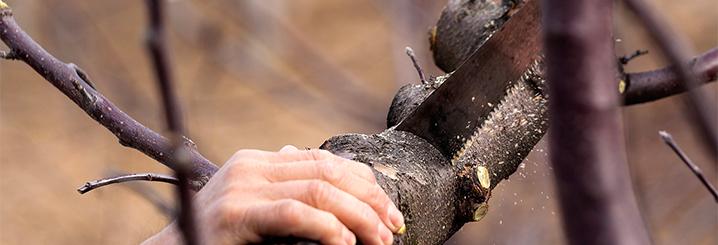The benefits of topping, when to do it and why

In pruning terminology, “topping” means cutting off the top of a growing stem or branch. It's a regulatory or summer pruning technique that is performed when the plant—whether it be a tree, shrub or grass—is in full growth (as opposed to dry pruning, which is performed when deciduous plants are in their vegetative rest period). Topping slows down or stops the growth of part of the vegetation, prompting the plant to redirect energy to the remaining parts.
Today we will see which plants in the garden and countryside benefit from topping. Specifically, we will talk about topping tomatoes, broad beans, cucurbits (such as cucumber) and even grapevine topping.
Topping in the garden: tomatoes, broad beans and cucurbits
You can top tomato plants by cutting the main stem about 10–15 cm from the apex using pruning shears, after the plant has formed 5-6 flower-bearing secondary stems (flower clusters). Topping should be performed in July/August, only for indeterminate tomatoes, whose main stem continues to grow throughout its life cycle. This applies to numerous varieties that are eaten fresh, such as salad tomatoes, cherry tomatoes and so on. By contrast, plum tomatoes are typically a determinate variety.
Topping tomato plants at the end of the season forces them to stop growing. So, you can use this technique before the cold weather arrives, or to free up your vegetable patch and prepare the soil using a rotary tiller and plenty of fertiliser (by the way, here's how to make your own compost to keep soil fertile).
Topping tomato plants isn’t the only way to improve your harvest: find out here how to grow tomatoes for best results. As with other vegetables, tomatoes require water: you can use a water pump to distribute it to your vegetable patch.
Just like many varieties of tomatoes, broad beans are also indeterminate. So, you can top broad beans after they flower, to strengthen the lower part of the plants and support the development of the pods.




Topping cucumbers helps to limit the size of the plants and enhance the flavour and size of the vegetables. It is generally done in June/July by cutting the stem above the fourth or fifth leaf when the plant has released 5 or 6 leaves.
Although not essential, in addition to cucumbers you can also top other plants in the same family (cucurbits), namely watermelons, melons and pumpkins (topping is not recommended for courgettes, however). If you let these vegetables grow without making a topping cut, you will get a more abundant harvest—albeit with smaller vegetables and fruit—staggered over a longer period.
To top melon plants, cut the stem above the second leaf once the fourth leaf appears. Wait for the secondary and top branches to grow after the third leaf so that tertiary branches develop, from which the fruits are formed.
Topping watermelon plants helps to limit fruit production in the same period and increases their size. Simply cut the stem above the fourth leaf to stimulate the growth of side branches. You can also make the same type of cut on pumpkin plants. Topping pumpkins just before autumn accelerates the maturation of the last pumpkins of the season.
Topping is also useful for basil: by removing apical inflorescences before they produce seeds, you actually stimulate the production of leaves, preventing them from losing aroma and drying out. Basil is known as the “King of Herbs”: find out which plants must be included in your aromatic herb corner.
Vegetable patches need maintaining all year round: here you will find an overview of the jobs to be done in the vegetable patch. In summer they are awash with colours, shapes and flavours (here’s how to protect the vegetable patch from the heat), whereas in winter the vegetable patch must be protected from frost. At the beginning of the year they are ready for the seedlings that you grow in the seedbed (here you can read our article which provides advice on that).


Topping in the countryside: grapevines
When grapevines are mature enough to produce fruit, they need to be topped during summer pruning. Topping grapevines involves cutting off the top of shoots and some young leaves (that is, leaves that are less essential for photosynthesis and therefore for grape quality). It helps to limit canopy size, so that the vine doesn’t buckle under its own weight. It also increases sunlight and air penetration, so that the bunches ripen better and in healthy conditions (protected from fungal diseases, thus reducing the need for pesticide treatments, which you can apply with a mistblower).
When should you top grapevines? Usually between fruit set (transformation of the flowers into berries) and bunch closure (when the berries start to touch each other), i.e. between late June and mid-July. Timing is of the essence: if vines are topped too late you will have to make more drastic cuts, eliminating many leaves that are important for photosynthesis. In the vineyard, topping times and methods vary depending on the vine training system you are using.



